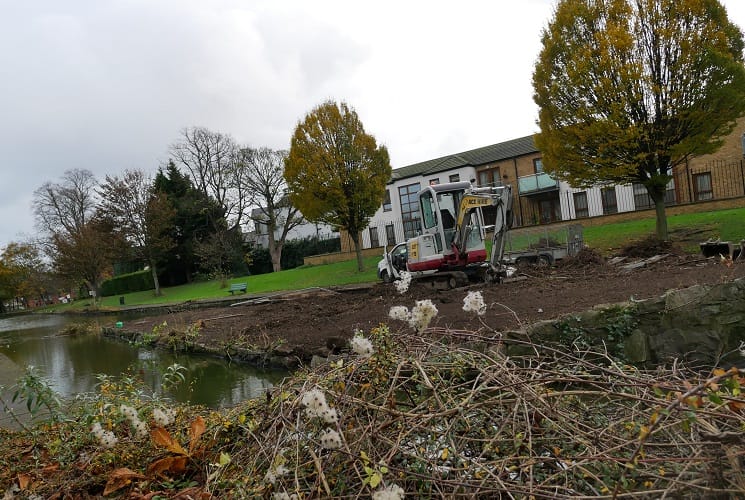What’s the best way to tell area residents about plans for a new asylum shelter nearby?
The government should tell communities directly about plans for new asylum shelters, some activists and politicians say.
Gardeners used to be judged on the shortness of their grass and how perfect everything was, says Michael Noonan. Now, they’re letting some patches go wild.

Have you noticed that parts of some Dublin parks have begun to look a bit wild?
“Sometimes people think we are leaving it because we are cutting costs, or we have lower staff members,” says Michael Noonan, senior executive parks superintendent with Dublin City Council.
“But that is not the reason,” Noonan says.
The real reason, he says, is a new approach to the parks, which is part of the council’s plans to increase biodiversity in the city.
“If you were to go back 15 or 20 years when I first joined the organisation, the gardener would be judged on the shortness of their grass, the least amount of weeds and how perfect everything was,” he says.
Now the council is letting some parts of the parks return to a more natural state, by planting wildflower meadows or just leaving the grass to grow and see what happens.
“We are trying to work with nature,” says Noonan. This means less use of chemicals, a lower carbon footprint, and growing more flower and berries for birds and bees to feed on.
As part of this strategy, the council is currently giving Ranelagh Gardens Park natural makeover.
Workers are on-site this week, transforming part of it into a meadow, with trails of wildflowers. Most of the new flowers will be specially selected to be attractive to bees and other pollinators.
“Pollinators will, in turn, attract birds,” says the plan for the park, which received unanimous support from local councillors at a meeting of the committee for the council’s South East Area on 15 November.

Welcome, Bees
Making the city’s parks bee-friendly is important, says Robert Moss, who manages An Taisce’s Green Flag Award for Parks.
Without access to pollen, many native species of bees will face extinction – and we need to keep them around to help pollinate some of our food, like fruit, he says.
We also need bees and other pollinators, such as wasps, butterflies and moths, to serve as food for other animals, such as birds.
In the countryside, intensive farming and the use of pesticides is causing rapid decline in pollinator’s numbers. “Bizarrely, it can be in the city where pollinators are able to survive more than in the countryside,” Moss says.
Traditionally, city parks weren’t great for pollinators either. Often, decorative flowers planted in parks are useless to bees, says Moss.
“Many of the display varieties are hybrids,” he says. “They wouldn’t produce the nectar and pollen, or they would produce it at the wrong time of year.”
Two of the main ways parks can encourage bees is by planting wildflower meadows and reducing how often they cut the grass, Moss says.
Like what Dublin City Council is doing in Ranelagh Gardens Park.
Ranelagh Gardens Park was the launch site for Ireland’s first hot-air balloon ride, and a new children’s playground with a nod to the balloon theme in its shape, has been installed there already this year.
There’s already a monument there to Richard Crosbie, “Ireland’s first airman”, who launched his hot air balloon from the park in 1785, in front of a crowd of at least 20,000, according to History Ireland magazine.
As well as creating a natural meadow and selecting flowers that attract pollinators, the council is also building a natural habitat within the park.
In the park, there is a pond, and in the pond, an island. That island is already home to birds including mallards, moorhens and gulls. But the council is adding more plants and trees to create a “woodland effect”, to make it even more bird-friendly, says Noonan.
That’ll include bird cherry trees (Prunus padus), which produce flowers and cherries and “have a lot of biodiversity interest, that birds can use them for nesting or feeding or for perching”, he says.
Submerged and floating plants in the pond will help to clean the water and provide habitats for pond life, according to the council’s plan for the park. And there are to be plans around the edges of the pond, to create a riparian habitat too.
Dublin City Council launched a plan last year to improve biodiversity in the city. The changes to Ranelagh Gardens Park are part of this larger strategy, and similar changes have been made in other parks.